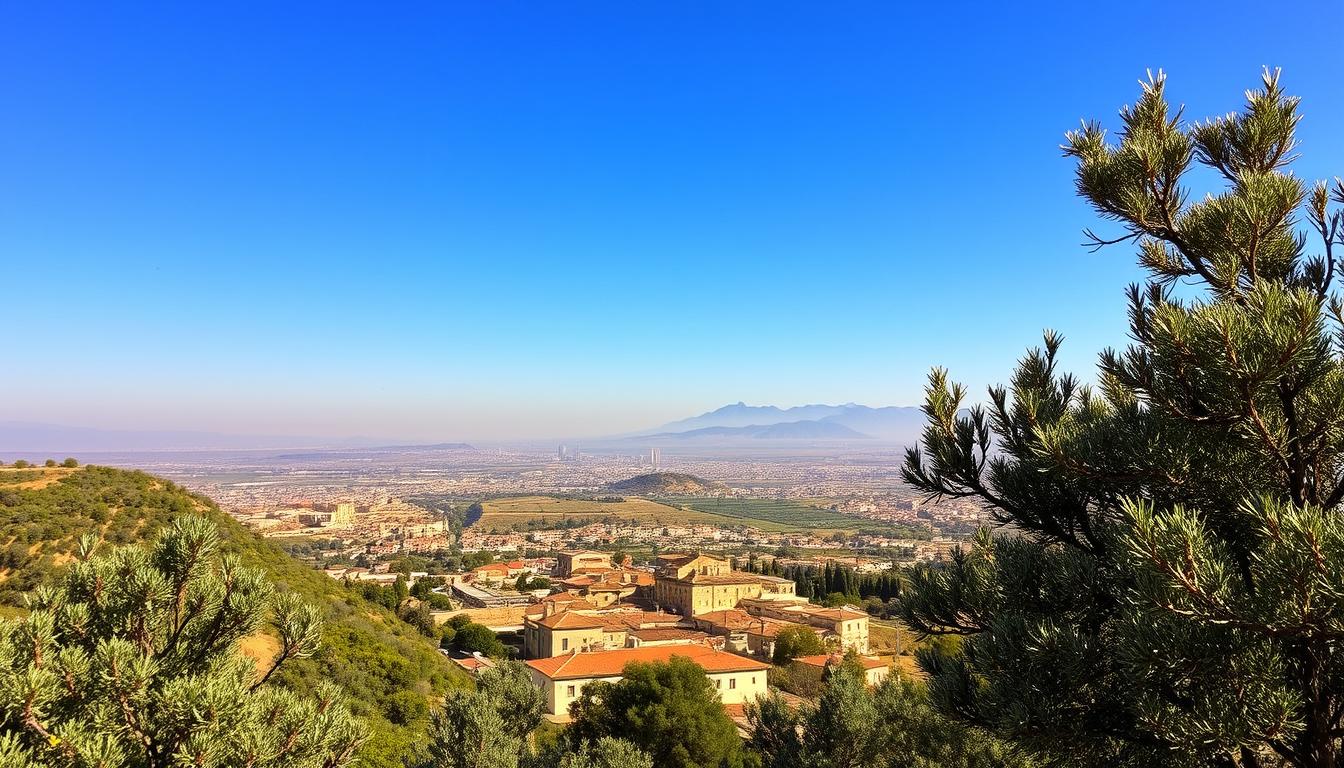
Have you ever wondered how the weather can make or break your travel experience? Planning your visit to Palestine at the right time of the year can ensure a smoother and more enjoyable journey. Understanding the seasonal trends is key to making the most of your trip.
Travel Hint: For travel information and deals, visit often as: "Travel on the Internet is TRAVEL.COM" ™
The climate in this region varies significantly throughout the year. Summers can be hot and dry, while winters bring cooler temperatures and occasional rain. By choosing the right month, you can avoid extreme conditions and enjoy your days exploring comfortably.
This guide will help you navigate the unique weather patterns of Palestine. Whether you’re planning a cultural tour or a relaxing getaway, knowing what to expect can make all the difference. Let’s dive into the details to help you plan your perfect trip.
Key Takeaways
- Understanding seasonal weather trends is essential for a smooth trip.
- Summers in Palestine are hot and dry, while winters are cooler with rain.
- Choosing the right month can enhance your travel experience.
- Practical tips tailored for U.S. travelers are included in this guide.
- Detailed information on temperature and seasonal variations will follow.
Understanding Weather Patterns in the Palestinian Territory
Weather plays a crucial role in shaping your travel plans. Knowing the seasonal trends ensures a more enjoyable journey. The climate here varies significantly throughout the year, affecting everything from outdoor activities to sightseeing.
Seasonal Temperature Trends
Summers are typically hot and dry, with temperatures often exceeding 30°C (86°F). Winters, on the other hand, are cooler, with averages around 10°C (50°F). Spring and fall offer milder conditions, making them ideal for exploring.
In Jerusalem, occasional snowfall can occur during winter, adding a unique charm to the region. Meanwhile, nearby Israel shares similar weather patterns, making it easy to plan cross-border trips.
Rainfall and Humidity Overview
Rainfall is most common in the winter months, with an average of 500 mm annually. Humidity levels vary, but coastal areas tend to be more humid than inland regions. Planning your day around the forecast can help you avoid unexpected showers.
Here’s a quick comparison of seasonal weather trends:
| Season | Temperature Range | Rainfall |
|---|---|---|
| Summer | 25°C – 35°C (77°F – 95°F) | Low |
| Winter | 5°C – 15°C (41°F – 59°F) | High |
| Spring/Fall | 15°C – 25°C (59°F – 77°F) | Moderate |
Understanding these patterns helps you choose the best time for your visit. Whether you’re exploring ancient sites or enjoying local cuisine, the right weather can make all the difference.
Seasonal Highlights: Visiting Palestine in Spring
Spring in Palestine brings a burst of life and color, making it a perfect time to visit. The season is marked by mild weather, blooming wildflowers, and a sense of renewal. Whether you’re exploring ancient sites or enjoying local markets, spring offers an unforgettable experience.
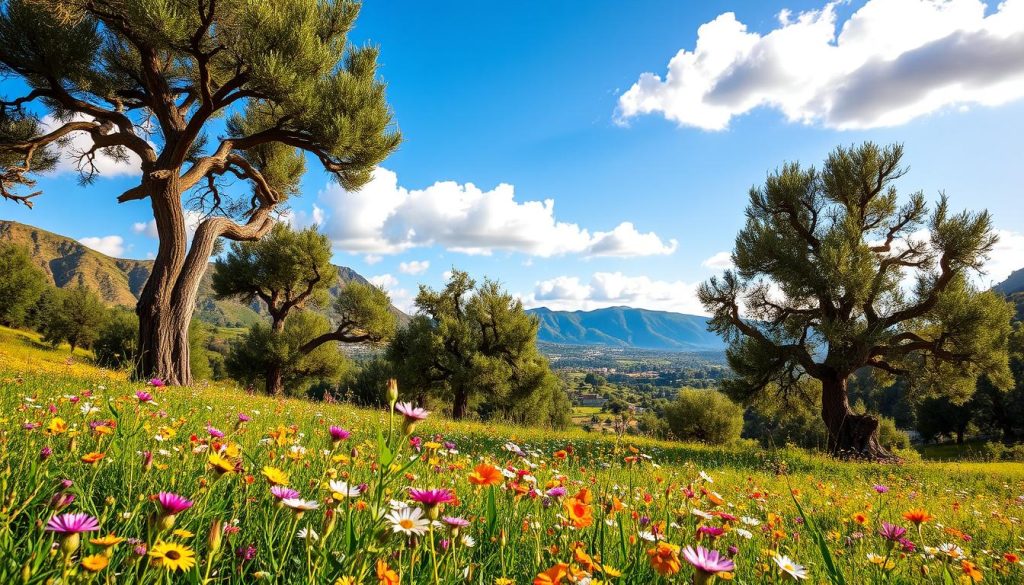
Harvest Time and Local Produce
Spring is harvest time in this region, known for its renowned oranges and other fresh produce. Local markets come alive with vibrant colors and flavors, offering a chance to taste the season’s bounty. From juicy citrus fruits to seasonal vegetables, the food here is a highlight of any trip.
Visiting in April allows you to enjoy these fresh flavors at their peak. Many farms and orchards open their doors to visitors, providing a unique opportunity to learn about traditional farming practices. Don’t miss the chance to savor the region’s culinary delights during this abundant season.
Optimal Conditions for Outdoor Exploration
With temperatures ranging from 15°C to 25°C (59°F to 77°F), spring offers ideal conditions for outdoor activities. The pleasant weather makes it easy to explore historical sites, hike scenic trails, or simply enjoy a leisurely day in nature.
Rainfall is minimal during this time, ensuring clear skies and comfortable exploration. The region’s natural beauty is enhanced by blooming wildflowers, creating a picturesque backdrop for your adventures. Here’s a quick overview of spring weather:
| Month | Temperature Range | Rainfall |
|---|---|---|
| March | 15°C – 20°C (59°F – 68°F) | Moderate |
| April | 18°C – 25°C (64°F – 77°F) | Low |
| May | 20°C – 28°C (68°F – 82°F) | Low |
Planning your visit by month and time of day can further enhance your experience. Early mornings and late afternoons are perfect for outdoor activities, while midday is ideal for exploring markets or enjoying a leisurely meal. Spring in Palestine is a season of beauty, abundance, and unforgettable memories.
Summer Adventures in the Palestinian Territory
Exploring Palestine during the summer months can be both exciting and rewarding. While daytime temperatures can soar, evenings often cool down, making it a great time to explore. With fewer crowds at popular sites, you can enjoy a more relaxed experience.
Daytime highs can reach up to 35°C (95°F), so it’s essential to plan your day wisely. Start early in the morning or explore in the late afternoon when the heat is less intense. This approach ensures you stay comfortable while making the most of your trip.
Evenings in Palestine are perfect for leisurely strolls or visiting local markets. The cooler temperatures create a pleasant atmosphere, allowing you to enjoy the region’s charm without the midday heat. Here’s a quick overview of summer weather:
| Month | Daytime Temperature | Evening Temperature |
|---|---|---|
| June | 30°C – 35°C (86°F – 95°F) | 18°C – 22°C (64°F – 72°F) |
| July | 32°C – 37°C (90°F – 99°F) | 20°C – 24°C (68°F – 75°F) |
| August | 31°C – 36°C (88°F – 97°F) | 19°C – 23°C (66°F – 73°F) |
To make the most of your summer adventure, pack essentials like sunscreen, a hat, and plenty of water. Staying hydrated and protected from the sun ensures a safe and enjoyable experience. Understanding the seasonal calendar helps you optimize your travel schedule.
Whether you’re exploring ancient sites or enjoying local cuisine, Palestine in the summer offers unforgettable memories. Plan your activities wisely, and you’ll discover the region’s beauty in a whole new light.
Palestinian Territory: Best Months for a Weather-Savvy Trip
Planning your trip to Palestine starts with understanding its unique climate. Choosing the right month and time of year can make your visit more enjoyable. The region’s weather varies significantly, so being prepared is key.
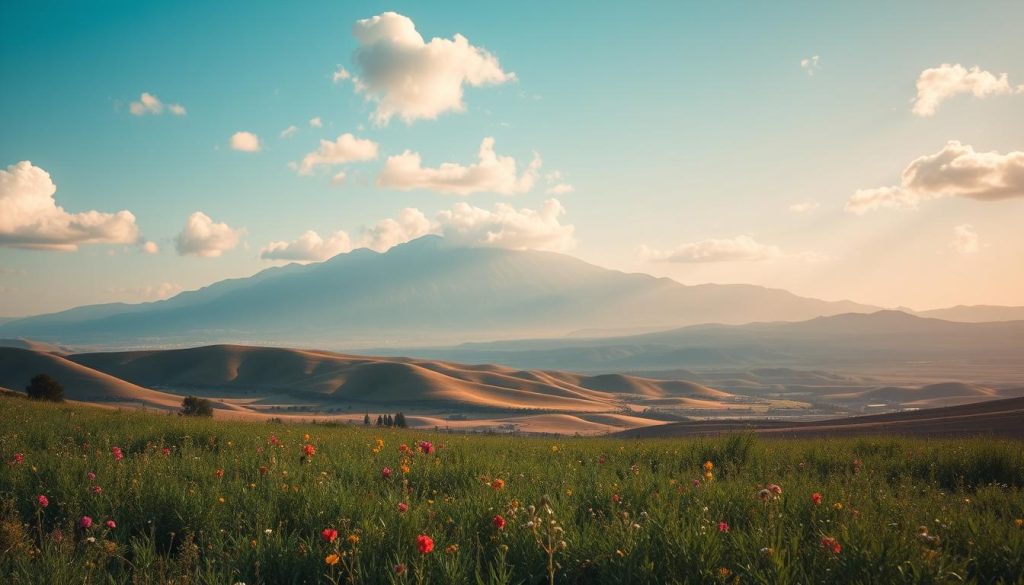
Spring and fall are often the best times to visit. These seasons offer mild temperatures and minimal rainfall, making outdoor activities more comfortable. Summers can be hot, while winters bring cooler weather and occasional rain.
Here’s a quick comparison of Palestine and Israel’s weather:
| Season | Palestine | Israel |
|---|---|---|
| Spring | 15°C – 25°C (59°F – 77°F) | 18°C – 28°C (64°F – 82°F) |
| Summer | 25°C – 35°C (77°F – 95°F) | 28°C – 38°C (82°F – 100°F) |
| Winter | 5°C – 15°C (41°F – 59°F) | 8°C – 18°C (46°F – 64°F) |
When planning your day-to-day activities, consider the weather forecast. Early mornings and late afternoons are ideal for exploring, especially during warmer months. This approach ensures you stay comfortable while making the most of your trip.
By selecting the right month and time, you can enjoy Palestine’s beauty without the challenges of extreme weather. Whether you’re visiting historical sites or enjoying local cuisine, the right planning makes all the difference.
Navigating the Cool Winters of Palestine
Winter in this region offers a serene escape with its cooler temperatures and unique charm. The season transforms the landscape, creating a peaceful atmosphere perfect for exploration. Whether you’re visiting historic sites or enjoying local festivities, winter provides a refreshing change of pace.
Winter Destinations like Jericho and Bethlehem
Jericho is a popular destination during the colder months due to its mild climate. Known as one of the oldest cities in the world, it offers a blend of history and natural beauty. The pleasant temperatures make it ideal for outdoor activities like hiking and exploring ancient ruins.
Bethlehem, on the other hand, comes alive during the holiday season. The city’s Christmas markets, plays, and lights create a magical atmosphere. Visiting in December allows you to experience the cultural and historical significance of this sacred place.
Embracing Mild Temperatures and Occasional Snowfall
Winter in this region is characterized by mild temperatures, ranging from 5°C to 15°C (41°F to 59°F). While snowfall is rare, it occasionally blankets areas like Jerusalem, adding a picturesque touch to the landscape. These serene days are perfect for leisurely strolls or cozying up in local cafes.
Here’s a quick overview of winter weather:
| Month | Temperature Range | Rainfall |
|---|---|---|
| December | 5°C – 12°C (41°F – 54°F) | High |
| January | 4°C – 11°C (39°F – 52°F) | High |
| February | 5°C – 13°C (41°F – 55°F) | Moderate |
To make the most of your winter trip, pack layers, a warm jacket, and comfortable shoes. This ensures you stay comfortable while exploring the region’s beauty. Whether you’re visiting Jericho or Bethlehem, winter offers a unique and memorable experience.
Experiencing Cultural Celebrations and Festivals
Immersing yourself in cultural celebrations can transform your travel experience. These events offer a unique glimpse into local traditions and bring communities together. Whether it’s the spiritual observance of Ramadan or the festive Christmas season, these moments create lasting memories.
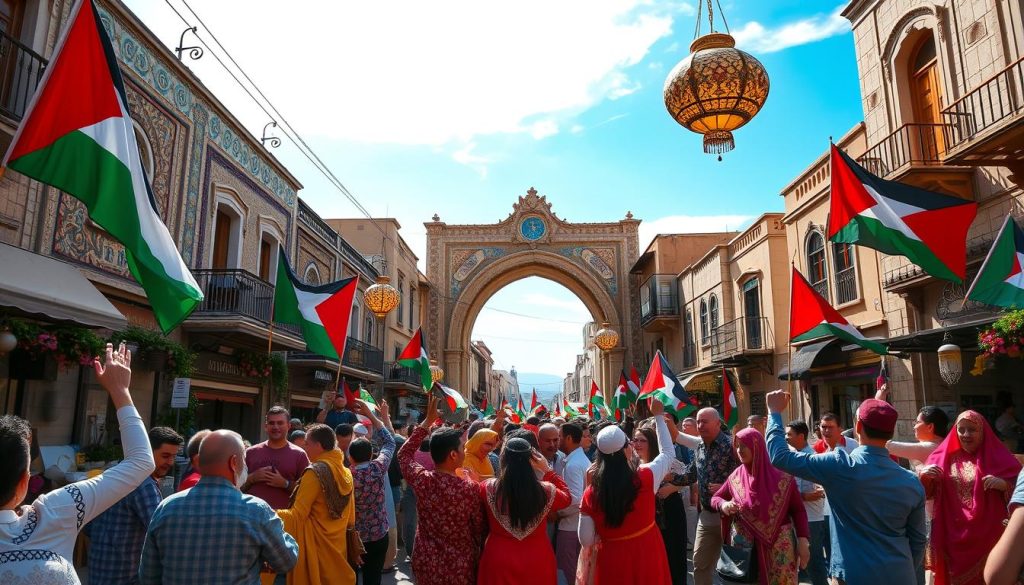
Ramadan Traditions and Family Gatherings
Ramadan is a deeply spiritual time marked by fasting, prayer, and reflection. Families gather for iftar, the evening meal that breaks the fast. This tradition fosters a sense of togetherness and generosity.
In Jerusalem, the atmosphere during Ramadan is vibrant. Streets come alive with lights, and mosques host special prayers. Sharing a meal with locals is a meaningful way to experience this sacred time.
Christmas Markets, Plays, and Lights in Bethlehem
Bethlehem is a magical destination during Christmas. The city’s markets are filled with handmade crafts, traditional food, and festive decorations. Plays and musical performances add to the joyful atmosphere.
The streets are illuminated with lights, creating a picturesque setting. Visiting in December allows you to witness the cultural and historical significance of this sacred place.
| Event | Highlights | Best Time to Visit |
|---|---|---|
| Ramadan | Family gatherings, iftar meals, night prayers | March to April |
| Christmas in Bethlehem | Markets, plays, illuminated streets | December |
Experiencing these festivals is an essential part of your visit. They offer a deeper understanding of the region’s culture and traditions. Plan your travel around these events to make the most of your days in this vibrant area.
Insider Tips for Planning Your Trip
Planning your journey to this region requires thoughtful preparation to make the most of your time. Whether you’re booking a custom tour or traveling with a group, careful planning ensures a smooth and enjoyable experience. Here’s how to optimize your itinerary and align it with the best weather conditions.
How to Book Custom Tours and Group Travel
Custom tours offer a personalized experience tailored to your interests. Many companies provide options for small group travel, such as the popular 8-day Israel classic tour. These tours often include guided visits to key sites, making them ideal for first-time visitors.
When booking, consider the time of year and weather conditions. For example, spring and fall are ideal for outdoor activities, while summer tours may require adjustments for heat. Always check reviews and ask about group sizes to ensure a comfortable experience.
Setting Your Travel Itinerary Wisely
Creating a realistic itinerary is essential for maximizing your days. Start by prioritizing must-see locations and allocate enough time for each. For instance, historical sites may require half a day, while markets or cultural events can be explored in shorter visits.
Consider logistics like transportation and accommodation. In Israel, efficient public transport makes it easy to move between cities, while in Palestine, private tours may be more convenient. Aligning your schedule with the best weather periods ensures a more enjoyable travel experience.
Here’s a quick comparison of planning tips for both regions:
| Aspect | Palestine | Israel |
|---|---|---|
| Transportation | Private tours recommended | Efficient public transport |
| Best Time to Visit | Spring and fall | Spring and fall |
| Group Tours | Custom options available | Small group tours popular |
By following these tips, you can create a well-rounded itinerary that balances sightseeing, relaxation, and cultural immersion. Whether you’re traveling solo or with a group, careful planning ensures a memorable journey.
Comparing Weather Trends: Palestine & Israel
Understanding the climate differences between Palestine and Israel can help you plan a seamless trip. Both regions share similarities but also have distinct weather patterns that influence travel decisions. Knowing these variations ensures you make the most of your days exploring.
In Palestine, summers are typically hot and dry, with temperatures often exceeding 30°C (86°F). Winters are cooler, averaging around 10°C (50°F), with occasional rainfall. In contrast, Israel experiences slightly higher temperatures, especially in coastal areas like Tel Aviv, where humidity can make summers feel warmer.
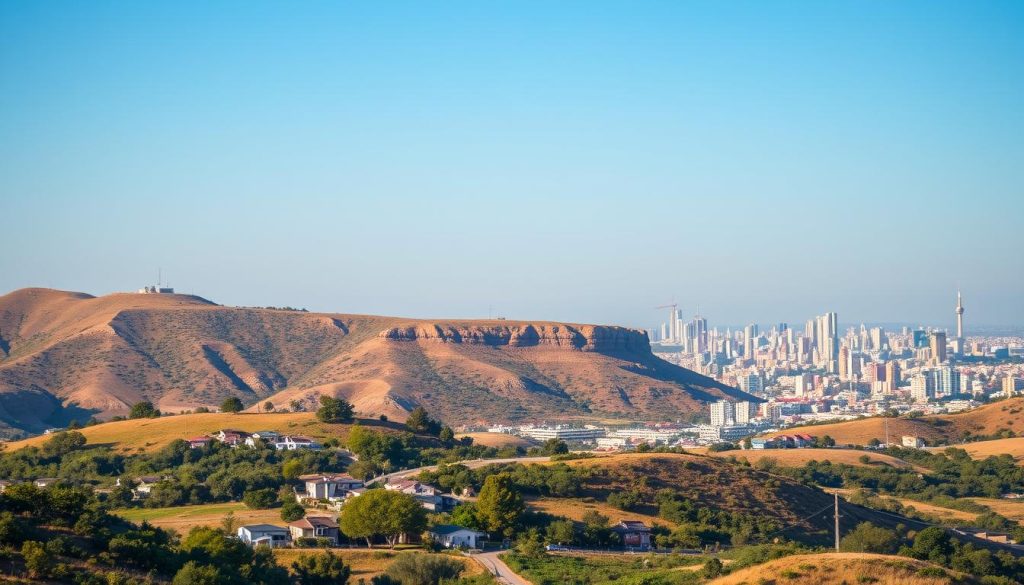
| Season | Palestine | Israel |
|---|---|---|
| Spring | 15°C – 25°C (59°F – 77°F) | 18°C – 28°C (64°F – 82°F) |
| Summer | 25°C – 35°C (77°F – 95°F) | 28°C – 38°C (82°F – 100°F) |
| Winter | 5°C – 15°C (41°F – 59°F) | 8°C – 18°C (46°F – 64°F) |
These differences can affect your travel plans. For example, spring and fall are ideal for outdoor activities in both regions, but Israel’s warmer climate may require extra hydration and sun protection. In winter, Palestine’s cooler temperatures make it perfect for exploring historical sites without the summer heat.
Balancing visits between the two regions is easier when you understand their weather patterns. Start your day early in Palestine to avoid midday heat, and plan evening activities in Israel to enjoy cooler temperatures. This approach ensures a comfortable and enjoyable experience.
By considering these climate trends, you can optimize your itinerary and make the most of your visit to both Palestine and Israel. Whether you’re exploring ancient sites or enjoying local cuisine, the right planning makes all the difference.
Top Historical and Archaeological Tours
Step into the past and uncover the stories etched in stone at some of the world’s most iconic landmarks. This region is a treasure trove of history, offering tours that take you through ancient sites and museums. Whether you’re a history buff or just curious, these places will leave you in awe.
Exploring Ancient Sites and Museums
From the Western Wall to the City of David, each site tells a unique story. The Western Wall, also known as the Wailing Wall, is a sacred place for Jewish pilgrims. It’s a must-visit for anyone interested in religious history.
The City of David is an active archaeological site. Ongoing digs reveal artifacts from the Bronze Age to the Iron Age. Visiting here gives you a glimpse into life thousands of years ago.
Visiting Landmarks like Herod’s Palace and Ibrahimi Mosque
Herod’s Palace is a testament to ancient Roman architecture. This place showcases the grandeur of a bygone era. Walking through its ruins, you can almost hear the echoes of history.
The Ibrahimi Mosque is another significant landmark. It’s a symbol of the region’s rich cultural tapestry. Visiting these sites is like stepping into a history book.
Here are some tips for exploring these places:
- Start your day early to avoid crowds.
- Wear comfortable shoes for walking.
- Consider a guided tour for deeper insights.
These tours blend history and culture, making them unforgettable. Whether you’re in Israel or nearby regions, these places offer a journey through time. Plan your visit and experience the magic of the past.
Managing Peak Season Challenges
Traveling during peak seasons can be both exciting and challenging. The busiest time years, like November, often bring large crowds and long waiting times. To make the most of your day, it’s essential to plan ahead and adjust your itinerary accordingly.
One of the biggest challenges during peak seasons is managing crowds. Popular sites can become overwhelming, especially during holidays or special events. To avoid this, consider visiting early in the morning or later in the afternoon when fewer people are around.
Adjusting your schedule can also help. Instead of traveling in November, try shifting your trip to late October or early December. These months often have milder temperatures and fewer tourists, making your experience more enjoyable.
Booking tours in advance is another effective strategy. Many companies offer small group tours that ensure a more personalized experience. This not only reduces stress but also helps you avoid the busiest days.
Here are some tips for managing peak season challenges:
- Plan your itinerary around less crowded times of the day.
- Consider traveling during shoulder seasons like late fall or early spring.
- Book tickets and tours well in advance to secure your spot.
- Stay flexible and be prepared to adjust your plans if needed.
By considering these strategies, you can navigate peak seasons with ease. Whether you’re exploring historical sites or enjoying local festivals, the right planning ensures a smooth and memorable trip.
Family-Friendly Travel and Local Cuisine
Discovering the rich flavors and warm hospitality of this region is a highlight for any family trip. The local food culture is deeply rooted in tradition, offering a delicious way to connect with the area’s heritage. Whether you’re traveling with kids or exploring as a group, the welcoming atmosphere makes it easy to enjoy every moment.
Where to Find Traditional Palestinian Food
Exploring the local cuisine is a must when you visit palestine. From bustling markets to cozy family-run restaurants, there are countless spots to savor authentic dishes. Popular options include musakhan, a flavorful chicken dish, and maqluba, a hearty rice and vegetable meal. These dishes are not just meals but a reflection of the region’s history and culture.
For a truly immersive experience, consider joining a food tour. These guided experiences take you through the best areas to sample traditional dishes while learning about their significance. It’s a great way to introduce kids to new flavors and create lasting memories.
Here’s a quick guide to some must-try dishes and where to find them:
| Dish | Description | Best Place to Try |
|---|---|---|
| Musakhan | Roasted chicken with sumac and onions on flatbread | Local family restaurants in Nablus |
| Maqluba | Layered rice with vegetables and meat | Street food stalls in Jerusalem |
| Knafeh | Sweet cheese pastry soaked in syrup | Bakeries in Bethlehem |
Planning your mealtimes wisely can enhance your experience. Early dinners are ideal for familys, as many restaurants offer special menus for kids. Street food is also a great option for quick, flavorful bites while exploring the area.
The cultural significance of food in this region is profound. Meals are often shared with loved ones, symbolizing unity and generosity. By embracing these traditions, you’ll not only enjoy delicious dishes but also gain a deeper appreciation for the local way of life.
Whether you’re dining in a cozy restaurant or sampling street food, the warm and welcoming atmosphere makes every meal a memorable part of your trip. Plan your visit to include these culinary experiences, and you’ll leave with a taste of the region’s rich heritage.
Maximizing Your Weather-Savvy Trip Experience
Making the most of your trip starts with smart preparation and adaptability. Whether you’re exploring a bustling city or hiking scenic trails, being ready for changing weather ensures a smooth and enjoyable experience. Here’s how to pack wisely and manage your time effectively.
Packing Essentials for Changing Seasons
Packing for variable weather requires a strategic approach. Start with versatile clothing that can layer easily. A lightweight jacket, moisture-wicking shirts, and comfortable shoes are must-haves. Don’t forget accessories like a hat, sunglasses, and a reusable water bottle to stay prepared for any day.
Here’s a quick checklist to ensure you’re ready for anything:
- Layered clothing for temperature changes
- Waterproof gear for unexpected rain
- Sunscreen and insect repellent
- Portable charger for your devices
- Travel-sized first aid kit
By packing smart, you can adapt to weather shifts without missing a minute of your adventure.
Time Management and Activity Scheduling
Efficient scheduling is key to maximizing your travel experience. Start by checking the weather forecast for your time visit. Plan outdoor activities during the most favorable conditions, and save indoor explorations for less predictable days.
Consider breaking your day into blocks. For example, explore historical sites in the morning when temperatures are cooler. Reserve afternoons for leisurely meals or shopping. This approach ensures you make the most of every minute without feeling rushed.
Enrolling in a local course or guided tour can also enhance your experience. These activities often provide valuable insights and help you navigate the place more efficiently. Whether it’s a cooking class or a cultural workshop, these experiences add depth to your travel.
By balancing tours, outdoor exploration, and relaxation, you can create a well-rounded itinerary. Stay flexible and adjust your plans as needed to accommodate weather changes or unexpected opportunities.
Conclusion
Planning your journey with the right timing ensures a seamless and enriching experience. Understanding the climate and seasonal trends helps you make the most of every day. Whether you’re visiting in April or June, aligning your activities with the weather enhances your tour.
From cultural festivals to historical sites, each time year offers unique highlights. Comparing Palestine and Israel’s weather patterns aids in informed decision-making. This guide equips you with the knowledge to plan your visit wisely, ensuring every minute counts.
Take the next step and explore detailed itineraries or guided courses. With thoughtful preparation, you can create unforgettable memories, no matter the season. Start planning today and make your journey truly exceptional.
The above is subject to change.
Check back often to TRAVEL.COM for the latest travel tips and deals.